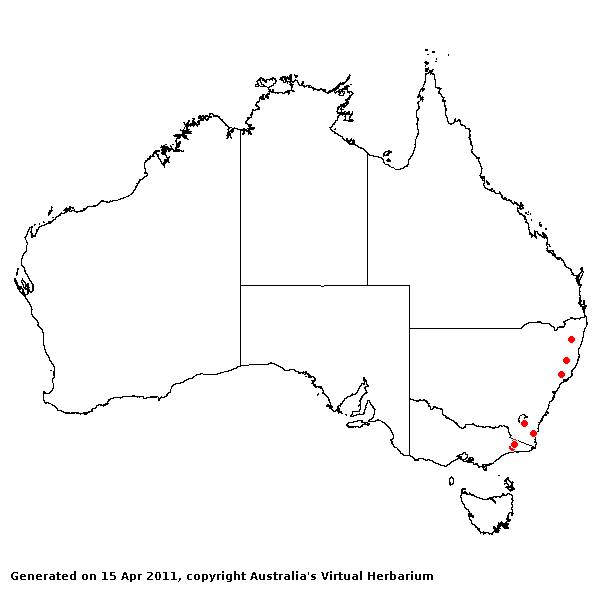Deyeuxia breviglumis Benth. Fl. Austral. 7: 584 (1878).
Classification. (GPWG 2001) : Subfamily Pooideae. Tribe Poeae.
Type of Basionym or Protologue Information: Australia: New South Wales: New England, C. Stuart s.n..
Key references (books and floras): [1878] G.Bentham, Flora Australiensis 7 (584 as ? Deyeuxia breviglumis), [2002] D.Sharp & B.K.Simon, AusGrass, Grasses of Australia, [2009] A.Wilson (ed.). Flora of Australia, Vol 44A. Poaceae 2 (212).
Habit. Annual. Culms erect, stature slender to delicate, 5–54 cm tall, 1–3 -noded. Mid-culm internodes glabrous. Lateral branches simple. Leaves mostly basal. Ligule an eciliate membrane, membranous, truncate or obtuse. Leaf-blades linear, involute or convolute, 2–9.5 cm long, 0.4–1 mm wide. Leaf-blade surface scaberulous or scabrous, glabrous.
Inflorescence. Inflorescence compound, a panicle. Panicle oblong or ovate, 1.5–13 cm long.
Spikelets. Fertile spikelets 1-flowered, with a barren rachilla extension, laterally compressed, 1.9–2.3 mm long.
Glumes. Glumes similar, firmer than fertile lemma. Lower glume lanceolate, 1 -nerved. Upper glume lanceolate, 1–1.3 mm long, 1 -nerved.
Florets. Fertile lemma 1.9–2.1 mm long, keeled, 5 -nerved. Lemma surface glabrous. Lemma apex entire, awned. Median (principal) awn subapical. Palea apex entire or dentate. Anthers 3.
Continental Distribution: Australasia.
Australian Distribution: New South Wales.
New South Wales: North Coast, Central Coast, South Coast, Northern Tablelands, Central Tablelands, Southern Tablelands.
Notes. Close to D. gunniana but the callus glabrous, the rachilla prolongation long and glabrous, the spikelet larger, and the inflorescence and leaf blades appearing 'stiffer'.
Endemic. Collected from wet, marshy and boggy grass flats and herbfields. Flowers Jan.-Feb. Fruits Feb.-Mar.


